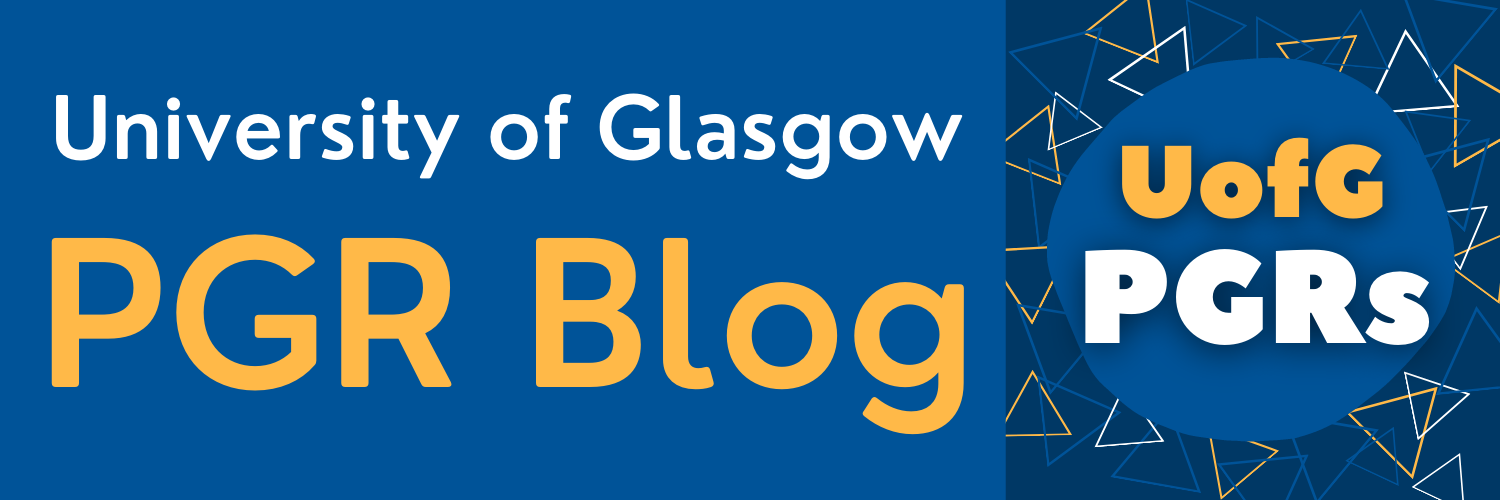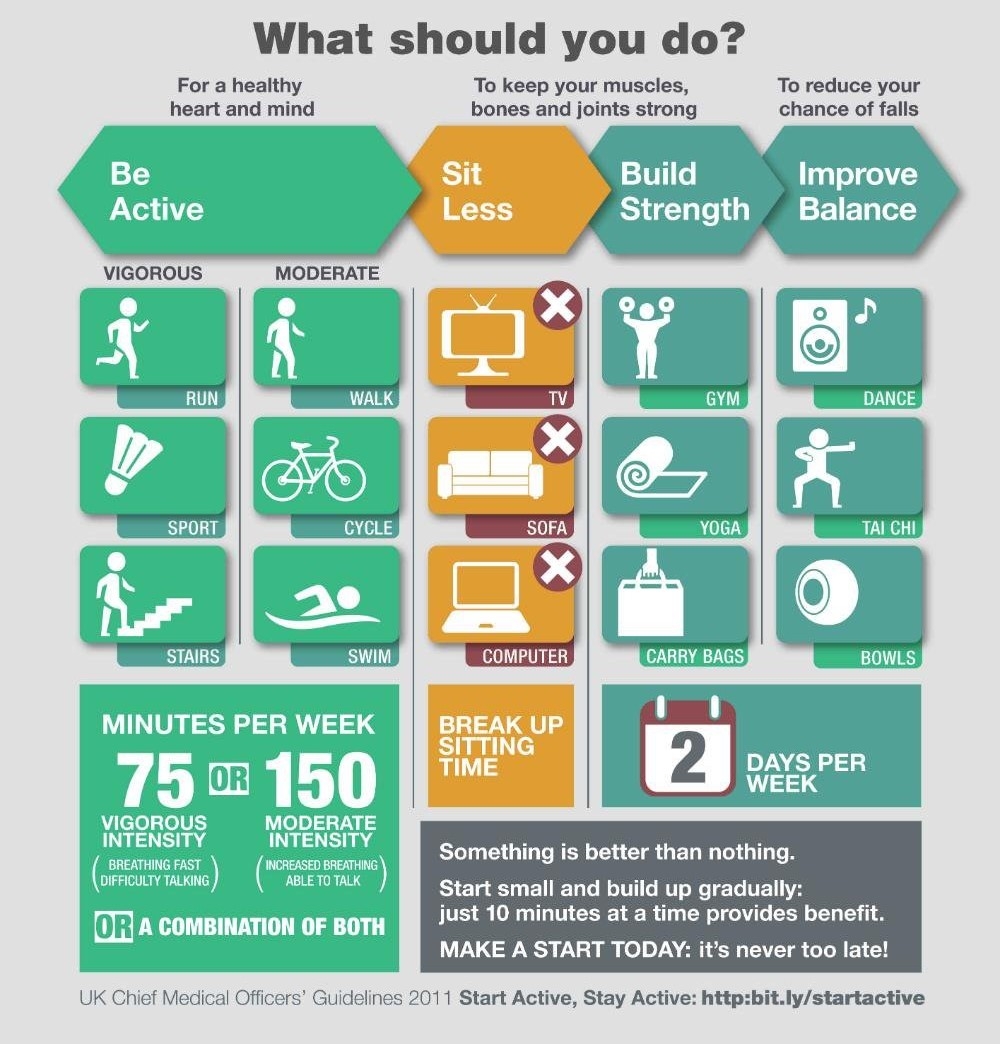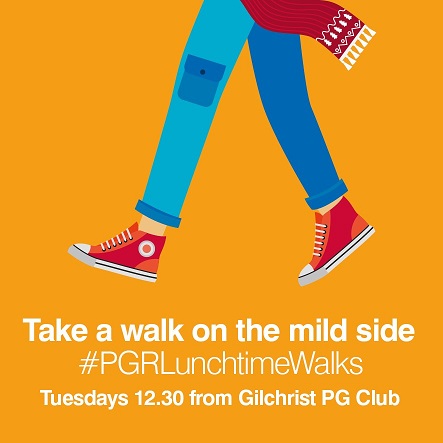Move More and Stand Up for your Health!
This post was written by Kathryn Bleakney. Kathryn is doing an MRes in Sports Science specifically researching Physical Activity, Sedentary Time and Mental Wellbeing of 1stYear UofG Postgraduate Research Students. Findings from her research show that UofG PGR students are highly sedentary and there is a real need for all of us to be more active and reduce sedentary time.
Researchers are continuously reminded of academic duties and priorities. But what about your physical and mental health? Prioritising your health is one of the greatest investments you can make in your research and for your long-term future.
Keeping active and reducing sedentary time is one key way to improve both physical and mental health and wellbeing. There are so many benefits including reduced risk of depression, anxiety and mental health issues, sleep improvement, weight maintenance, stress management, improved work-life balance and quality of life. This all has a positive impact on your research by increasing productivity and improving alertness. Not to mention additional common benefits of physical activities – meeting new people, seeing new places, learning new skills and a sense of achievement outside of academia.
So, what exactly do the terms physical activity and sedentary time mean?
Physical Activity – any movement of the body which uses energy. Moderate (e.g. walking to/from your office, the UofG Daily Mile, PGR walk, gardening, household chores, dancing) and vigorous (e.g. running, climbing stairs, cardio classes at the Stevenson Gym) physical activity are most beneficial for our health. Check out the WHO’s site for more examples.
UK Chief Medical Officer’s Guidelines, 2011, Start Active, Stay Active, ‘Physical Activity’ infographic, OGL
Current guidelines recommend 150 minutes per week of moderate intensity physical activity OR 75 minutes per week of vigorous intensity physical activity OR a combination of both.
Sedentary Time – time spent sitting or lying down. As a postgraduate researcher, it is highly likely that you will be very sedentary. Think of all that time spent glued to a computer searching for literature, analysing results, writing reviews and reports!! Or even in the evenings binge watching TV shows (I know I’m guilty of this!!) It is really important to reduce your sedentary time. Even if you are very active, if you are highly sedentary you have an increased risk of poor physical and mental health. Here are some handy tips for how you can reduce your total sedentary time, and limit it to no more than 30 minutes at a time:
Stand when you can (on the phone, on the bus, on the subway)
Take the stairs
Suggest walking meetings with supervisor(s)
Download pedometer app. Start with a target minimum of 10,000 steps, and then gradually increase this
Stand up every 30 minutes
Leave your desk for coffee/lunch breaks. Why not try the PG Gilchrist Café or Byres Road?
Get off public transport a stop early and walk
Park your car further away from destination and walk
We’re lucky too that Glasgow provides so many opportunities to be active both on and off campus.
On campus opportunities
Infographic created by Paul Banks
PGR walk: a weekly walk leaving from the Postgraduate Gilchrist Café, Tuesdays at 12.30pm
Get involved in UofG PGR Step Count November Challenge
PGR Gardening Sessions: indulge your green thumb or try something different on Thursdays from 1pm to 2pm. Sign up via webform here
Daily Mile: daily walk led by University of Glasgow Sport staff departing from a different location each day. Sign up here
GUSA buddy system: if you’re not comfortable exercising by yourself why not try the GUSA buddy system? You will be paired with a ‘buddy’ for 4 weeks, and you don’t need to be a member of the gym.
Become a member of University of Glasgow Sport (Stevenson Gym)
Off campus opportunities;
Visit some local museums (all free!): Nearby museums include The Hunterian and Kelvingrove Art Gallery
Take a walk around Kelvingrove Park or Botanic Gardens
Why not try a Park Run? These free, weekly, 5km timed runs are friendly and sociable events, suitable for all abilities. All you need to do is register before your very first parkrun.
Good Move Glasgow: Glasgow holds over 50 free walks each week, including free themed walks. These are good opportunities to enjoy the fresh air, meet new people and discover the sights, culture, arts, architecture, wildlife and history of Glasgow.
Kelvingrove Bowls (Free, Summer Only): A firm favourite amongst my friendship group! Pop along to the bowling greens by the Kelvingrove Museum and the Glasgow Life staff will sort you out and explain exactly how to bowl properly – although some of us are still trying to learn!!
Photo by Kathryn Bleakney
Which of these activities are you inspired to have a go at? Let @UofG_PGRblog know how you stay active and maintain that important work-life balance!






